[3 March] Happy National Day Bulgaria!
 •
by
•
by VampireA
General information
Population : 7.1milion people (102nd in the World,23rd in Europe)
Total Area : 110,993 km^2 (103rd in the World,15th in Europe)
Official languages : Bulgarian
Official currency : Bulgarian lev(BGN)
Capital : Sofia
Population density : 65 people/km^2 (95th in the World,42th in Europe)
Top 5 biggest cities : Sofia, Plovdiv, Varna, Burgas, Ruse
The politics of Bulgaria take place in a framework of a parliamentary representative democratic republic, whereby the Prime minister is the head of government, and of a multi-party system. Executive power is exercised by the government. Legislative power is vested in both the government and the National Assembly. The Judiciary is independent of the executive and the legislature.
The president serves as the head of state and commander-in-chief of the armed forces, and has the authority to return a bill for further debate, although the parliament can override the presidential veto by a simple majority vote of all members of parliament.
Bulgaria is a unitary state. Since the 1880s, the number of territorial management units has varied from seven to 26.Between 1987 and 1999 the administrative structure consisted of nine provinces (oblasti, singular oblast).
A new administrative structure was adopted in parallel with the decentralisation of the economic system.It includes 27 provinces and a metropolitan capital province (Sofia-Grad). All areas take their names from their respective capital cities. The provinces subdivide into 264 municipalities.
Sofia – the capital city of Bulgaria and the largest settlement in the country, is the administrative centre of both Sofia Province and Sofia City Province.


National sport : Football

Volleyball

Rhytmic gymnastics

National animal : Karakachan dog (Bulgarian shepard)

National plant: Rose (Rosa spp.)

National instruments: Kaba gaida


The significance of the 3rd of March
The 3rd of March commemorates the signing of the Treaty of San Stefano, which ended the Russo-Turkish War of 1877-1878, and thus led to the establishment of the autonomous state of Bulgaria after 500 years of Ottoman rule.
Although it was now a vassal state of the Ottoman Empire, Bulgaria only recognised their suzerainty in a formal way, and conducted it’s foreign policy independently.
After a bloodless revolution in 1885, Bulgaria also annexed the province of Eastern Rumelia from the Ottomans.
This holiday is a welcome holiday at the start of spring and it traditionally marked by ceremonies across Bulgaria, particularly in those towns and cities which saw the fiercest fighting in the war.
Shipka pass in the Balkan Mountains is at the centre of celebrations marking the key battle that took place there. In Sofia, there are church services, wreath laying and a military march to honour those who gave their lives in the war.
3 March became Bulgaria's Liberation Day in 1888, though it took until 1978 before it gained its National Day of Bulgaria status and was formally decreed as an official holiday in 1990.




Bulgaria is a land of many myths, and a bunch of them are related to the many mountains spanning the southwest side of the country.

An abode of deities but also of formidable forces, mountains are a place of awe and respect in Bulgarian traditions. In folk myths, tales and legends, they are described as living beings, sometimes as deities, but always with an individual destiny. Just as each of the mountain ranges in this country has its characteristic appearance and temperament.
The Rhodopes caress your eyes with their soft contours, Pirin is beautiful but harsh, Rila is majestic and awesome. The Balkan Mountain (Stara Planina) which runs right across the country as a true guardian, protecting both the north and south of Bulgaria in the remote times of battles and conquerors.
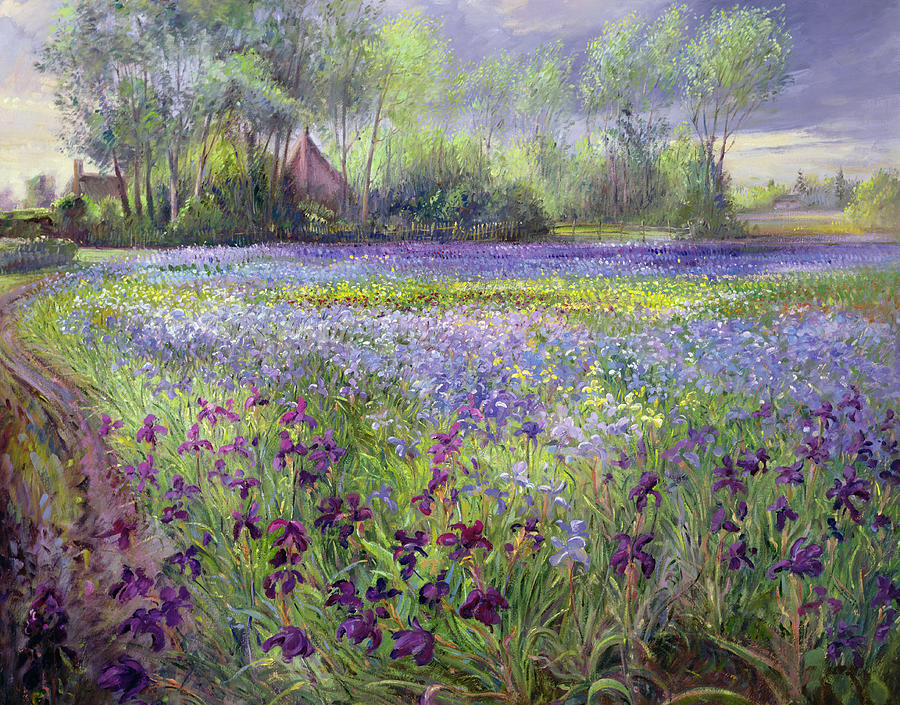
Perun – the major Slavic god lived in the mountains with his sister. With her beauty, Perunika (which means the flower iris in Bulgarian) was shining even stronger than the Sun. And as often happens in fairytales, she possessed not only unearthly beauty but also skills and mastery at work. She was working on her loom all winter long and at the break of spring she went to the nearly lake to whiten the woven cloth. She worked all day and stretched the canvases at the nearby peak. Perunika fell ill and died when she was very young and a blue-purple flower grew upon her grave. People call it Iris (perunika) and the peak where she stretched the white cloths is being called to this day Momin dvor (or maiden’s yard).

Perun is also associated with the name of the Pirin Mountain itself, which locals also call Perrin. Many stories and legends are narrated to this day about the life of the Slavic god, providing a glimpse into the etymology of a number of place names. According to one of them, when Christianity was adopted in Bulgaria, Perun withdrew to the highest point in the mountain.
A priest from the village located at the foot of the mountain decided to go and bring him gifts – as a tribute and as a token of his desire for peaceful co-existence. He walked long and decided to take a break by the lake, in which Perunika was whitening her canvases. The pagan god was sitting high and couldn’t see him. Inadvertently, Perun pushed a piece of rock downwards that hit the man who fell into the lake.
Since then, it has been called "The Popovo Lake" (the priest’s lake) and the name of the small islet in the middle is "Popova kapa" (literally the priest’s hat) because there remained the priest’s kalimavkion.
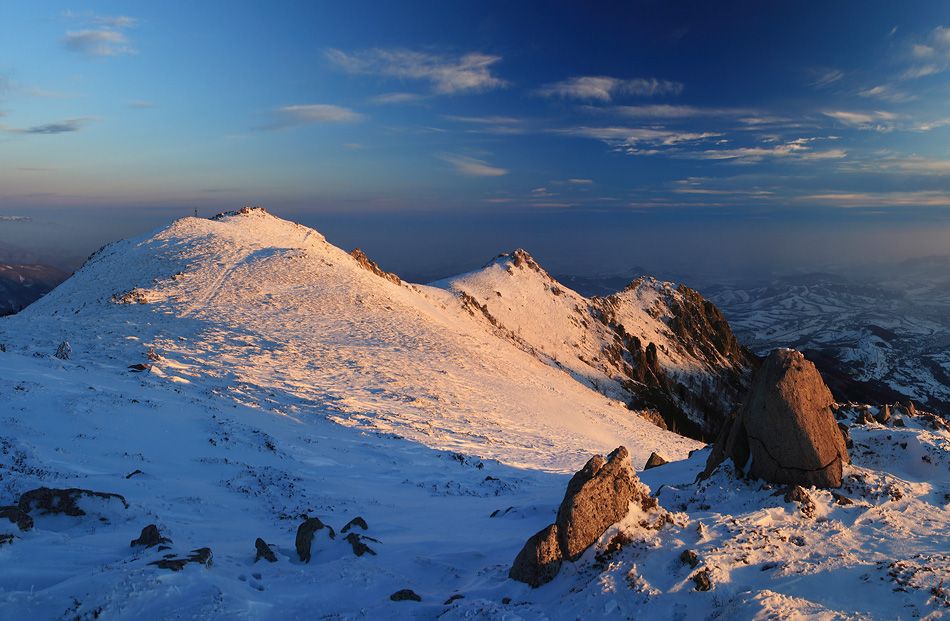
The treasury of Bulgarian oral folklore contains countless stories based on true events. According to local versions, among them is the story of Todora’s dolls - a group of four rocky peaks in the western Balkan Range.
In Spanchevtsi, one of the villages in the area, a beautiful girl once lived by the name of Todora. It was autumn – the time for working-bees and bonfires. Todora gathered her girlfriends. They set a fire in the yard, began to spin wool, sing and dance. Then came the village boys. They came up with a bet - the girl who spins her doll the quickest (in local dialect doll stood for a piece of wool), would be married to the most handsome man.
Just then the moon shone upon the mountains and Todora uttere
😛"Not the most handsome, but the most dauntless! The one who climbs to the top of the mountain and fixes a stake into the ground, will be the bravest among you!" The young lads were left speechless. Everyone knew that at nighttime the mountain was haunted by scary fairies. One might not come back alive.
Todora was spinning quickly, not speaking a word. She finished first and decided to go alone to the top and fix her distaff into the ground there.She did do so, then began her descent. However, something pulled her back – in the darkness she had caught the bottom of her apron with her spindle. She slipped down the slope and fell into the abyss. Since then, those peaks are called Todora’s dolls. (Todora Kukli)

Top 5 visited places by tourists
Veliko Tarnovo


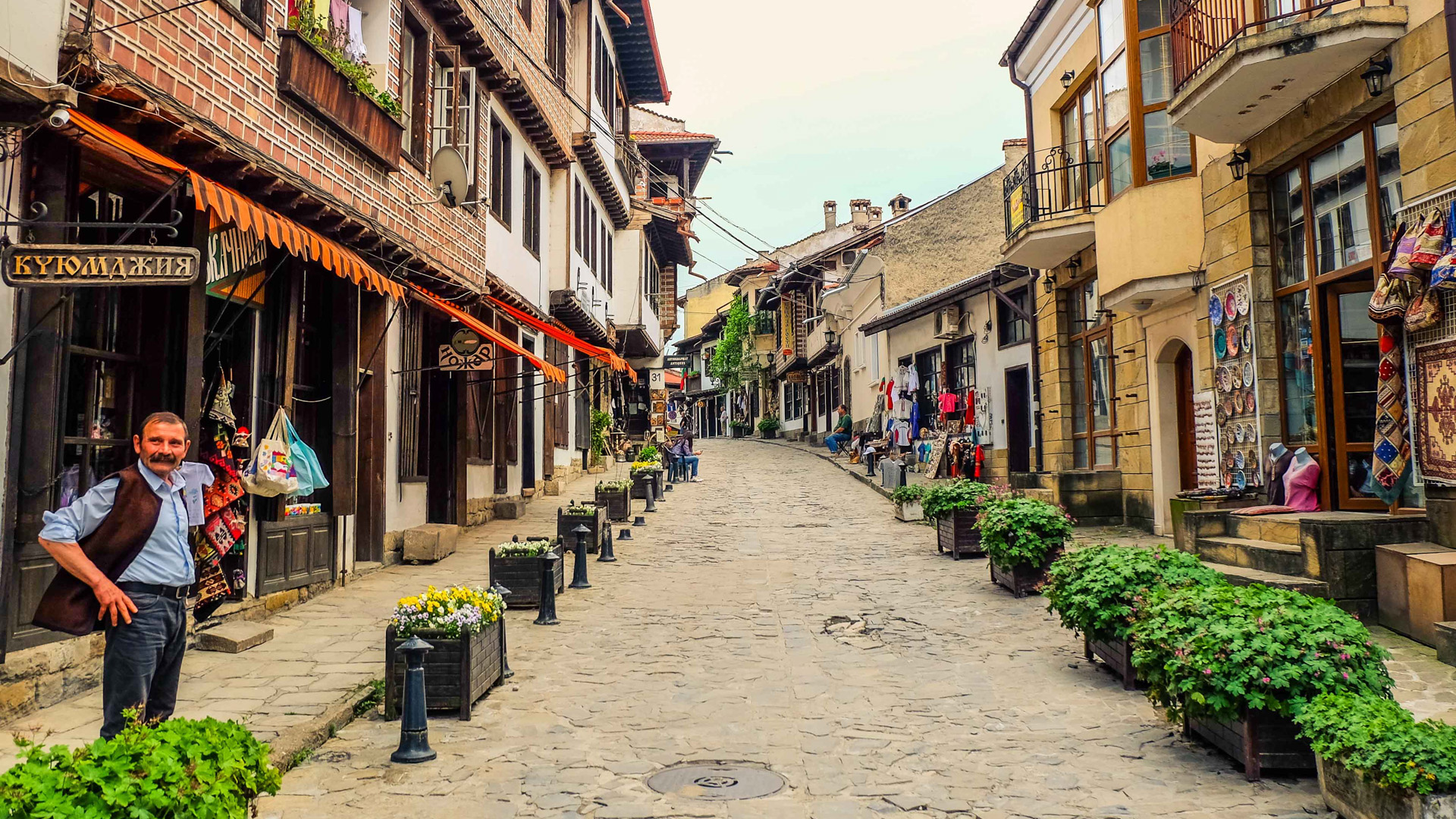
The legendary City of the Tsars stands aloft on the edge of the rising foothills of Bulgaria’s northern mountains. Bisected by the S-shaped meanders of the Yantra River, the town’s setting is nothing short of breathtaking, with terraces of terracotta-coloured roofs looming over the waterways below.
The pretty cobblestone lanes and half-timbered homes of this one’s old town are prime examples of what’s now known as the Tarnovo school, which developed as the Second Bulgarian Empire boomed in the Middle Ages.
That means travelers here experience a mixture of natural beauty – courtesy of the wild coniferous woods that blanket the landscapes all around – and unbridled culture and history, oozing from the Tsarevets capitol and the clutch of gorgeous Byzantine churches.
Varna



The sun-splashed favourite of local Bulgarians heading out of Sofia and Plovdiv for the summer, Varna is much more than just your run-of-the-mill resort town on the edge of the Black Sea. With a long and enthralling history, oodles of crumbling Roman bathhouses and elaborate Orthodox architecture (like the almost unpronounceable Dormition of the Mother of God Cathedral), the city appeals to history buffs and culture vultures as well as sun seekers.
Of course, the beaches are still a big factor, and one bustling sand-side promenade beckons travelers with oodles of seafood restaurants and cocktail bars, while lively clubs erupt right on the edge of the shore after dark.
Sofia




The sprawling capital of Bulgaria is something of a patchwork of its own past. Around its edges rise the great brutalist monuments to Soviet rule; endless streams of cookie cutting high-rises.
Closer to the centre and the ancient remains of the Serdica Fort and the Roman-Byzantine Church of St George sit in the shadow of Stalinist municipal buildings.
And then there are the iconic Orthodox domes and gilded edifices of the Alexander Nevsky Cathedral, which glisten under the snow-packed tops of Vitosha Mountain in the distance.
It’s all very eclectic, and rarely fails to impress travelers that opt to linger here a little while.
Rila Monastery
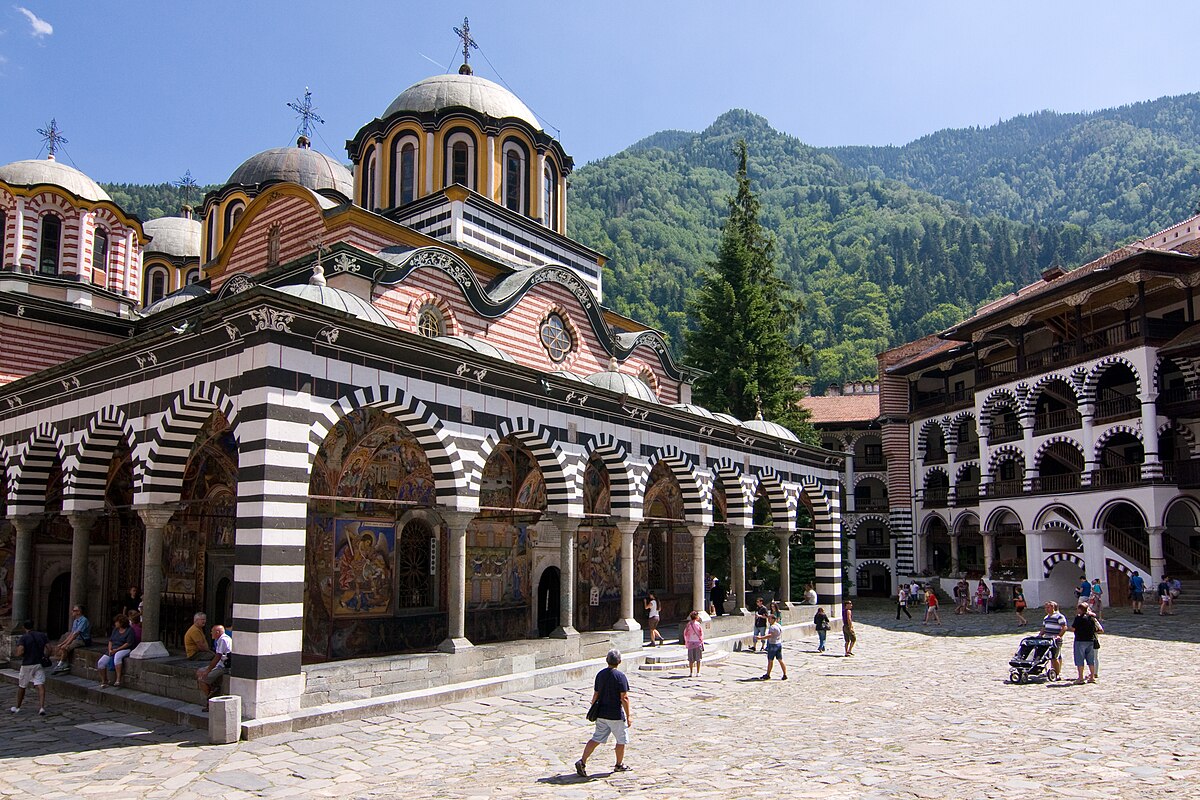


Perhaps the most famous Eastern Orthodox monastery in the world, Rila has risen and risen to become a veritable symbol of the Bulgarian nation.
It entered the UNESCO World Heritage List way back in 1983, hailed for its curious intermingling of Mamluk, arabesque, Byzantine and Romanesque styles, and resplendent iconostases walls, carved meticulously and inlaid with shimmering gold leaf.
An on-site museums helps travelers unravel the more than 1,000 years of history that coalesce at the site, while endless courtyards and peristyles decorated in murals and medieval scenes mean there’s plenty of art and architecture to draw the eye.
Bansko

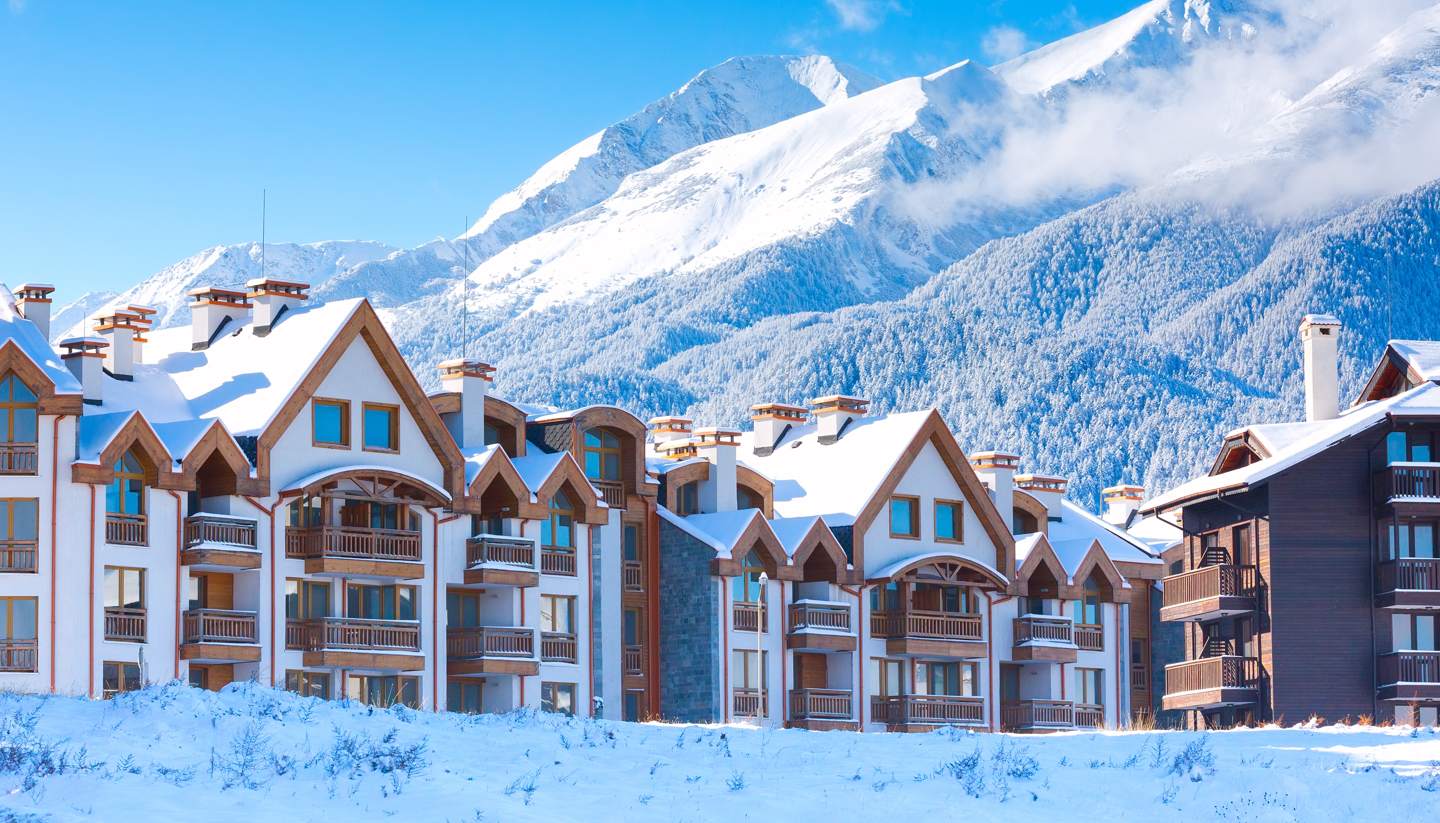

Bansko is Bulgaria’s most prized winter sports resort. With countless expansions and new lift projects at its back, the dual ski fields of the Chalin Valog and Shiligarnika that make their home between the fir forests here have become some of the most lauded in all of Eastern Europe.
And even if you won’t be hitting the 70 kilometers of groomed runs on offer, Bansko’s rugged setting in the Pirin ranges and wealth of luxury hotels, hedonistic bars, jazz joints, cross-country trails and Bulgarian tavernas is sure to hit the spot!

Top 3 locations suggested by the locals
Uzana

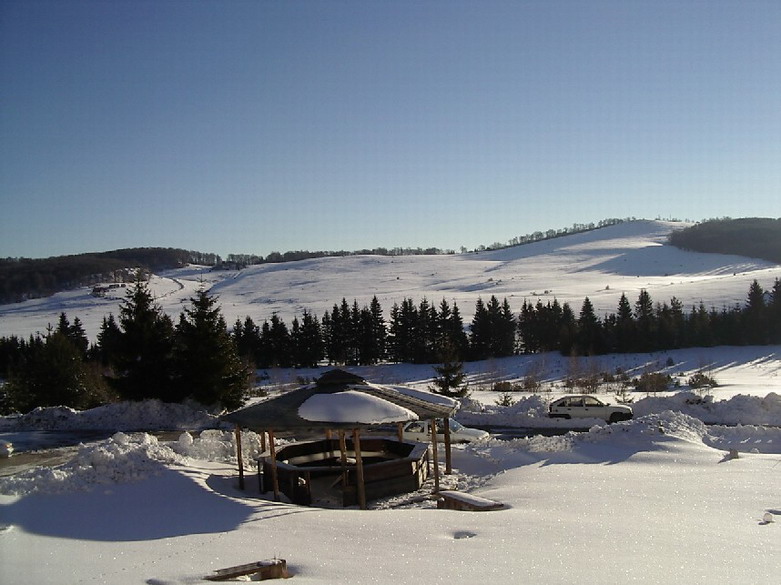

Uzana is a winter resort located at the foot of the Ispolin peak, at an altitude of 1,420m. Additionally, the resort is located in the geographical center of Bulgaria.
Krastova Gora
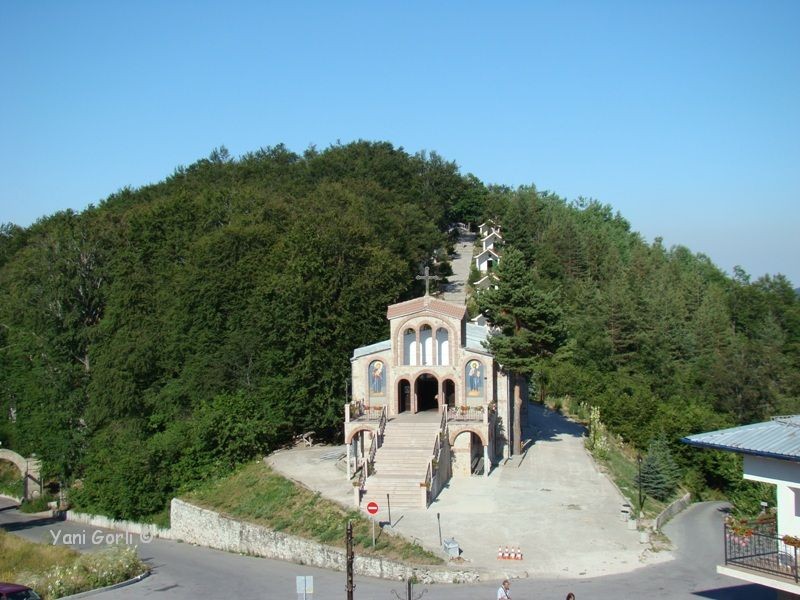


Krastova Gora is one of the largest Christian centers in Bulgaria, which attracts a large number of pilgrims. The place is situated in the Middle Rhodope Mountain, 60 km from Plovdiv, 40 km from Asenovgrad and 6 km from the village of Borovo. Its altitude is 1,545 meters. The complex is situated on a meadow amidst a beautiful forest.
The reason that makes Krastova Gora attract so many pilgrims from the entire country is the legend that a piece of the Christ’s Cross was buried here. Many legends speak about this place and all of them are related to the Cross of Christ and the wonder of healing.
Bolata

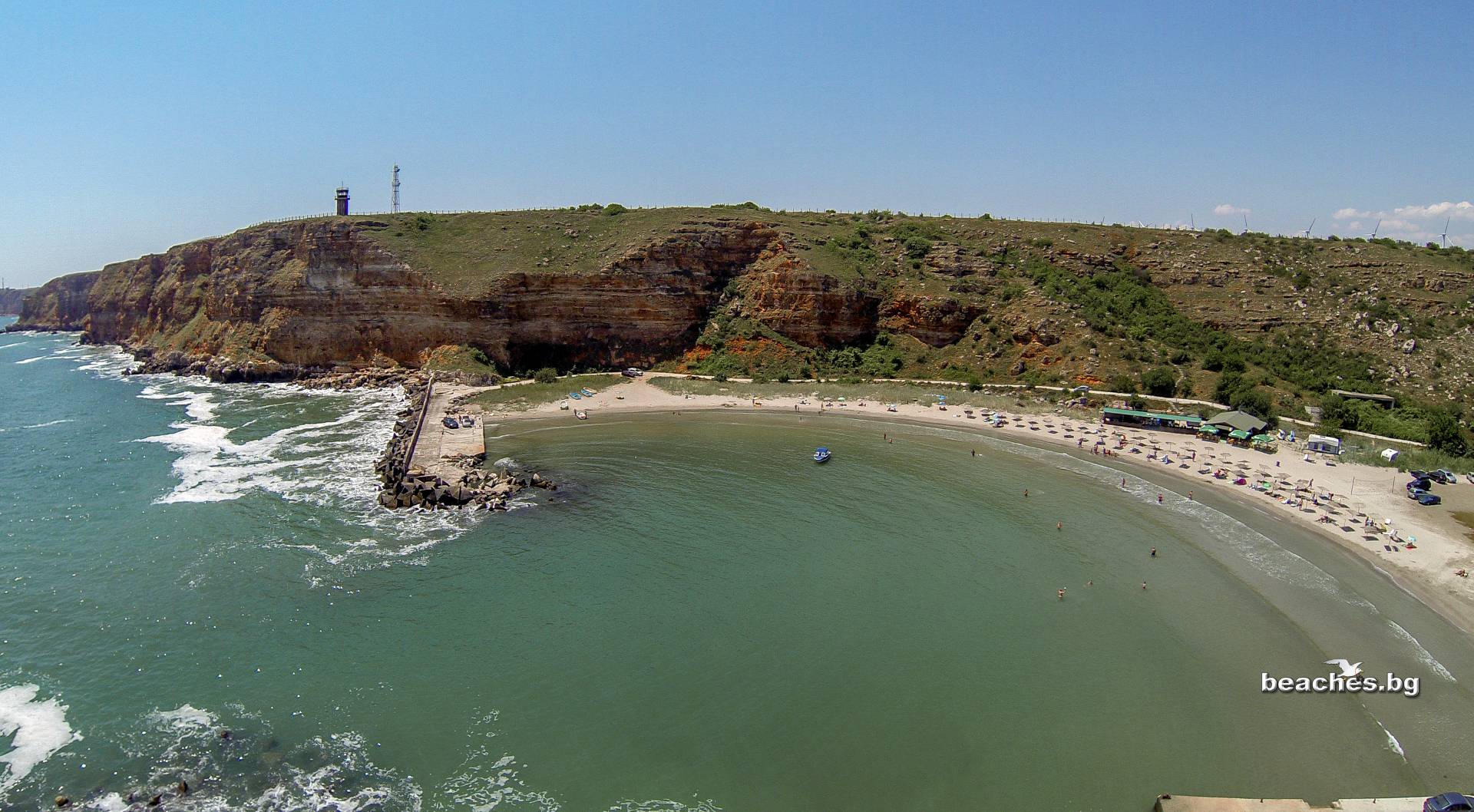
Bolata is a small cove and nature reserve in Northern Bulgaria, on the Black Sea Coast.The caves around Bolata feature remnants of an ancient settlement., while the sky above Bolata represents an important path for migratory birds who might also nest here.Examples include the common kingfisher,the grey heron and the mallard.

Inventions Bulgaria gave to the world!
*Cyrillic alphabet!
*St.Clement of Ohrid, 9th century AD.
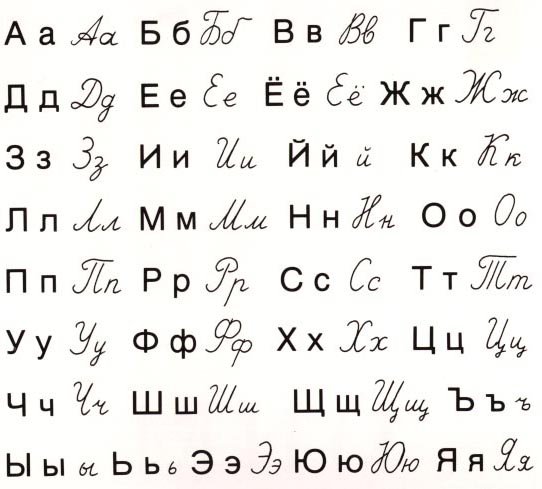
*Lactobacillus bulgaricus - the bacteria responsible for natural yogurt!
*Stamen Grigorov, 1905.

*Oxyhydrogen!
* Ilia Valkov (Yull Brown)

*Galantamine (Nivalin) - medication for mild to medium Alzheimer’s disease!
* Dimitar Paskov, 1959

*Photoelectret - essential to modern photocopying!
* Georgi Nadjakov, 1937.


Famous people from Bulgaria
Vasil Levski - Bulgarian revolutionary and is a national hero of Bulgaria today. Dubbed the Apostle of Freedom, Levski ideologised and strategized a revolutionary movement to liberate Bulgaria from Ottoman rule. Levski founded the Internal Revolutionary Organisation, and sought to promote a nationwide uprising through a network of secret regional committees.
(1837-1873)
Hristo Stoichkov - Bulgarian former footballer. A prolific forward, he is regarded as one of the best players of his generation and is widely considered the greatest Bulgarian footballer of all-time.He was runner-up for the FIFA World Player of the Year award in 1992 and 1994, and received the Ballon d'Or in 1994. In 2004, Stoichkov was named by Pelé in the FIFA 100 list of the world's greatest living players.
(born 1966)
Stefan Stambolov - Bulgarian politician, journalist, revolutionist, and poet who served as Prime Minister and regent. He is considered one of the most important and popular "Founders of Modern Bulgaria", and is sometimes referred to as "the Bulgarian Bismarck". In 1875 and 1876 he took part in the preparation for the Stara Zagora uprising, as well as the April Uprising.
Stambolov was, after Stanko Todorov and Todor Zhivkov, one of the country's longest-serving prime ministers. Criticised for his dictatorial methods, he was among the initiators of economic and cultural progress in Bulgaria during the time of the Balkan Wars.
(1854-1895)
Grigor Dimitrov - Bulgarian professional tennis player. His career-high ATP singles ranking is world No. 3, which he achieved in November 2017 after winning the 2017 ATP Finals.
Dimitrov is the most successful Bulgarian male tennis player to date, both in terms of ranking reached—as of 2017 he is the only Bulgarian tennis player ever to be ranked inside the top 10 ATP Singles—and prize money won, being the only male Bulgarian player to reach US$1m and later $10m.
(born 1991)
Nina Dobrev - born Nikolina Konstantinova Dobreva, is a Bulgarian-Canadian actress. Her first acting role was of Mia Jones in the drama series Degrassi: The Next Generation. She later became known for portraying Elena Gilbert on The CW's supernatural drama series The Vampire Diaries.
Dobrev has also appeared in several feature films, including the 2012 coming-of-age drama The Perks of Being a Wallflower, the 2014 action comedy Let's Be Cops, the 2015 horror comedy The Final Girls, the 2017 action thriller xXx: Return of Xander Cage, and the 2017 science fiction drama Flatliners.
(born 1989)

Traditional food
Баница (Banitsa)

This piece of greasy pastry deliciousness can be purchased in bakeries all over the country. Its standard variety includes a filling of feta-like white cheese (сирене, sirene), though varieties filled with onions, cabbage, spinach, mushrooms or pumpkin can also be found. For your sweet tooth, you can also try banitsa with apples and walnuts. Banitsa in any of its forms is an inseparable part of a traditional Bulgarian breakfast.
Шкембе чорба (Shkembe chorba)

The literal English translation is tripe soup - tripe is the thick lining of the stomach of cattle... Seasoned with garlic, vinegar, and hot red pepper, it will surprise you with its unique aroma and taste - good surprise that is. It is scientifically proven that Shkembe chorba helps alleviate a hangover when consumed after waking up with one. Eat it with as much rakia or beer as you want.
Таратор (Tarator)

Tarator is a cold soup made of yoghurt, cucumbers, and garlic. It is best enjoyed in the summertime when the blazing sun scorches your head. You can eat it any other time too but you will appreciate its icy chill more when the temperatures around you increase. We have discovered that you can have a rakia or beer with it with no negative side effects but stay away from combining it with wine.
Шопска салата (Shopska salad)

Bulgaria’s internationally-renowned salad is a simple — but effective — combo of diced tomatoes, cucumbers, onions and peppers, with grated sirene cheese and parsley on top. Whether a century-old meal of the Shopi ethnographic group (as the name implies) or a 1950s invention of communist Bulgaria’s state-owned tour operator Balkantourist, Shopska salad is the perfect appetizing companion to a shot of rakia at the start of a Bulgarian meal.
мусака(Moussaka)

This dish is enjoyed in many variations throughout the Balkan region. The Bulgarian version involves potatoes, eggs and minced pork meat and is a known favourite of Bulgarian men, among whom it is a popular joke that they cannot marry a woman who is unable to cook the perfect musaka.
While the Greek variety of musaka may be based on eggplant, the Bulgarian dish relies strictly on potatoes to layer the meat. The whole thing is traditionally covered with thick Bulgarian yoghurt on top.
Traditional desserts
Тиквеник (Tikvenik)

This is a version of banitsa, made with pumpkin and with a sweet flavor.
тахан халва (Sesame halva)

Halva is a sweet confection made of various ingredients, and served across most of Eurasia, consisting of a paste(either flour based or nut based) and sugar. In Bulgaria, the most popular ones are made of sesame seed paste.(tahini halva)
Торта Гараш (Garash cake)

Garash cake – layers of walnut meringue and rich dark chocolate cream, enveloped in silky chocolate ganache – the ultimate chocolate lover’s cake, perfect for a special occasion!
Козунак (Kozunak)

Traditional sweet leavened bread made for Easter in Bulgaria, and for every possible holiday in Romania
🙂.
Traditional drinks
Ракия (Rakia)

Common to much of Southeastern Europe, though some might say that Bulgaria is the birthplace of this drink.
Айран (Ayran)
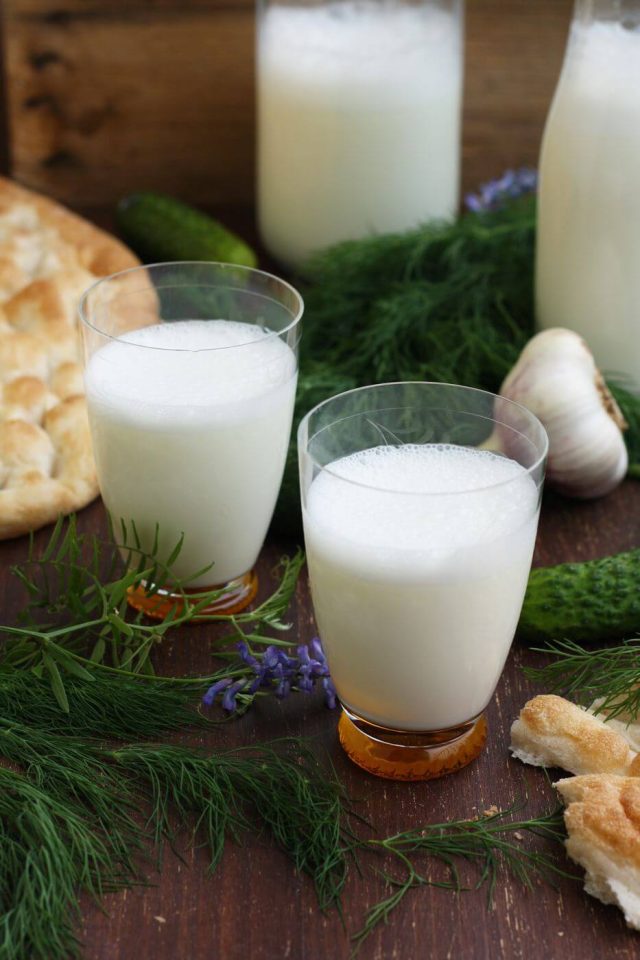
This drink is made from equal parts water and yogurt. It is also common to Turkey.

Interesting facts about Bulgaria
1.Bulgaria is the only country in the Europe whose name has not changed since the original establishment of the country (in 681 AD).
2.Bulgarian is the oldest written Slavic language and is written in the Cyrillic alphabet.
3.Bulgarians claim to have invented yoghurt, and its yoghurt has a unique flavor not found in any other country because of Lactobacillus Bulgaricus, the bacterium responsible for that flavor and consistency, It can only be found in the air of Bulgaria.
4.The Bulgarian Air Force pilot Rayna Kasabova was the first woman ever to participate in a military flight in the history of the world.
5.The roses grown in Bulgaria’s “Rose Valley” produce most (70-85
😵of the world’s rose oil – a component in most perfumes.
6.Bulgarians shake their heads to mean yes and nod for no.
7.The Bulgarian army has never lost a single flag in battle.
8.The Bulgarian Orthodox Church is the oldest Slavic Orthodox Church.
9.With the accession of Bulgaria to the EU on January 1, 2007, Cyrillic became the third official alphabet of the EU.
10. John Vincent Atanasoff was a physicist and inventor of Bulgarian descent, best known for inventing the first electronic digital computer.

My 5 words when I hear about Bulgaria:
#Varna,#Yogurt,#Cyrillic,#Salad,#Roses
What are your 5?

Special thanks to Old 7 and a message from the bulgarian comunity:
I leave you with a Bulgarian meme:

Waiting for feedback , comments , opinions and if there is anyone that thinks I missed something , I could do something better or just wants to help me with this project , PM me !
Special thanks to Kariky for the spacers !!
Hope you enjoyed and see you next time!
P.S. Article 40/74!








































P.S.2. Don't forget to push the flags !


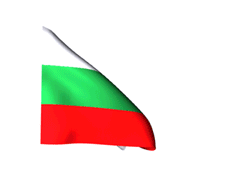
Comments
Great article, well done bro. And thanks of course 🙂
Bulgars are Turks xD Shkembe chorba
Happy National Day, Bulgaria!
o7
Срећан вам дан државности браћо Бугари!
Happy National Day Bulgaria!
Явно статията е предназначена за чуждата преса и чуждите граждани в еБългария 😃
Well , it is made to present Bulgaria to foreigners
OK. Thanks! I hope that the foreigners will like our country 🙂
Happy National Day Bulgaria!
o/
Докъде доживяхме, румънец да ни нарича братя.....
Северна Добруджа си е българска ......
Беше Имо , когато имаше българи там . Сега и Беломорие няма българи и в много други погранични места - сами сме си виновни 🙁
rumyncite kato nas sa traki - do 1851 pishat s kirilica i govorqt na bylgarski dialekt kato maketata no posle po politi4eski /avstro-ungariq /pri4ini priemat latinicata, kralskite im rodove zapo4vat sled smyrta na ivan asen vtori, kato ne e imalo voina mejdu tqh i nas , prosto carskata vlast v bg gubi vliqnie i zapo4vat da gi upravlqvat mestni voivodi , Mihail smeliq - pyrviq im car sled osmanskoto robstvo govori i pishe na bylgarski i a na semeiniq mu gerb na kirilica i na cyrkovno nylgarski pishe voevoda na vlahiq i moldova
румънеца е толкова "Румънец", колкото македонеца -"Македонец"...
!!
(>‿◠)✌
Happy National Day, Bulgaria!!
o/
Честит 3 Март Булгари...
о7 Great article!
Честит празник!
о7
o/
о/
Good job, too much varna though because of old 😛p check Plovdiv out as well 🙂
Iha
Happy Bulgur day xd
v
Happy national day o7
Благодаря от името на всички българи за 60'000 румънски воини, които участват в Освобождението на България от Османско робство! Повече от 8'000 загиват.
Вечна слава на героите!
Е... Румъния отстъпва на Русия Южна Бесарабия и получава част от България - Северна Добруджа, в която живеят повече от 90% българи. Но това е тема за друг разговор.
Kauan on kärsitty
https://www.erepublik.com/en/article/kauan-on-k-rsitty--2665769/1/20
Не "руманисвай" 60'000-те "румънски воини"......., все едно сравняваме "шопи" с "ямболии"....колкото и да не е удачен примера....Но, все пак и шопите и ямболиите са българи...
??
Happy National Day Bulgaria! ❤
Hail glagoljica!
Hail Černozemski! haha xD
Happy National Day Bulgaria !
о/
Great article!
Thanks! 🙂
Честит празник! 🙂
lol
Thank you!
Very nice! Or as we say in Bulgarian - Браво! 😛
o/
PS: I got to check your other articles. It seems like you've been busy and I need to pay more attention 🙂
Seems this article is for starting a new war 😃
След като прочетете статията си, увеличихте желанието да посетите България ♥
After reading your article increased the desire to visit Bulgaria♥
Happy National Day!
Happy National Day Bulgaria !
Честит 3 март!
Happy National Day Bulgaria!
You should have mentioned the great Bulgarian hero Vlado Chernozemski!
о7
о7 Честит Празник Българи
Wow, Bulgaria seems to be like Switzerland! 🙂
You missed out on Dimitar Berbatov! 🙁
My 5 words when I hear about Bulgaria:
#Karakachan dog,#Krastova Gora,#Bolata ,#Nina Dobrev,#Lactobacillus bulgaricus
My 5 words when I hear about Bulgaria (food) 😛
#Banitsa,#Moussaka,#Tarator,#Shkembe Chorba,#Garash cake
Yes , but this is because Stoichkov is best man from Gheorghe Hagi.🙂
честитам празник
о7
Честит празник!
HAPPY DAY
Happy National Day Bulgaria!